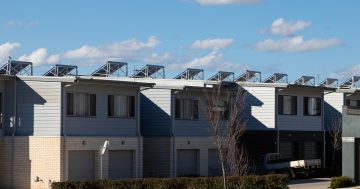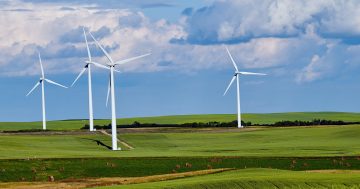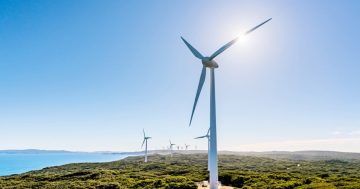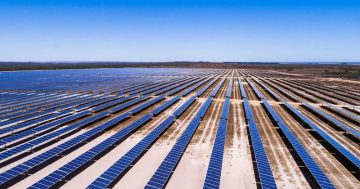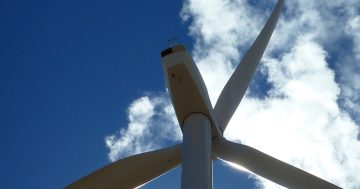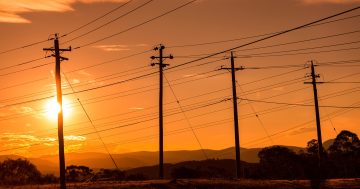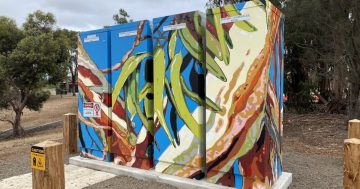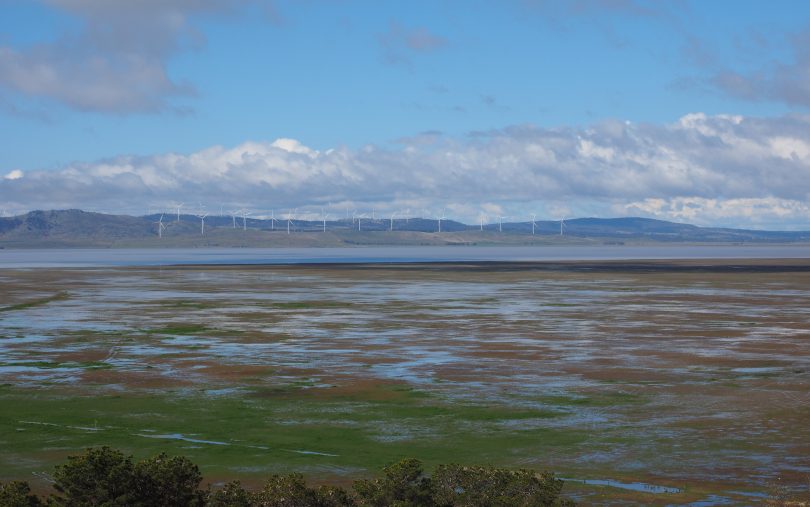
Lake George and wind turbines from Weereewa Lookout. Photo: Nick-D.
The Federal Government has announced it will expand and boost funding to the Capacity Investment Scheme (CIS) and the National Energy Transformation Partnership (NETP) in conjunction with state governments in an effort to provide more reliable electricity supplies and to encourage greater investment in clean energy projects.
The CIS was designed to provide a national framework to encourage new investment that will boost reliability in Australia’s rapidly changing energy market and support Australia’s energy system to reach 82 per cent renewables by 2030.
The pilot stage of the CIS was launched earlier this year and included a Commonwealth/NSW tender in partnership with the NSW Electricity Infrastructure Roadmap and tenders in South Australia and Victoria. It says the investment will provide more available power in the energy grid, delivering long-term reliable, affordable and low-emissions energy.
The government is hoping that its investment will shore up investor confidence in clean energy projects, especially after reports that investors have begun shying away from wind farm projects and that the planned pace of construction of clean energy projects was falling behind the schedule required to achieve the 82 per cent target by 2030.
A 23 November release says the expansion will take the CIS from the current pilot stage to 9 GW of dispatchable capacity and 23 GW of variable capacity nationally – for a total of 32 GW nationally. It says this is the equivalent to around half the current National Electricity Market (NEM) with its nearly 11 million customers.
It said the expected costs of CIS contracts won’t be publicised as many of the tenders are yet to be bid on.
CIS contracts will be won through competitive tenders, and will include revenue floors and ceilings. If the revenue produced is higher than agreed, the tenderer will pay a percentage to the Commonwealth, but if it is lower, the Commonwealth will pay the difference to the tenderer.
It says the Commonwealth will negotiate bilateral agreements with states and territories under the existing NETP, and that the states will be asked to work with the Commonwealth to ensure renewables are rolled out and reliability is enhanced through objective benchmarks, an orderly transition, and potential strategic reserves.
The initiative has received positive feedback from a number of investment, industry and clean energy groups.
In a separate release, the Australian Aluminium Council said the expansion will “greatly expand the scope of capacity contracts from the Federal Government and looks like a very helpful step to addressing fears that inadequate supply would pose to price and reliability this decade”.
Chief executive of the national employer association Ai Group Innes Willox said, “These contracts don’t expose electricity users to the kinds of cost transfers that other approaches, like an expanded RET, might have involved. Competitive auctions should help ensure value for money and minimise the ultimate cost to the Budget.”
The Energy Users’ Association of Australia welcomed the announcement, saying it’s “both an important step in providing reliable supply to consumers, and also a continued firm commitment by Federal and jurisdictional governments to achieving Australia’s net zero targets”.
Clean Energy Council chief executive Kane Thornton said, ”This is a massive win for Australia – cheaper power bills for all Australians and jobs and investment in regional communities right across the country”.
The announcement came just a day after Minister for Climate Change and Energy Chris Bowen and NSW Minister for Climate Change, Energy and the Environment Penny Sharpe announced the awarding of six tenders valued at $1.8 billion through a partnership between the Capacity Investment Scheme and NSW’s Electricity Infrastructure Roadmap.
These projects include one four-hour storage capacity battery, two two-hour storage capacity batteries and three virtual power plants of two-hour storage capacity that will provide 1075 MW of dispatchable energy projects across NSW. These projects are equivalent to 8 per cent of NSW’s total 2022-23 NSW summer peak demand into the network at short notice.
“These projects are critical for energy security in NSW as we transition to a cheaper, cleaner energy system,” Ms Sharpe said.
“We have no time to waste as coal-fired power stations retire. We must get more renewable energy into the grid – backed by storage and flexible demand – to keep the lights on and meet our net zero targets.”
The CIS South Australia-Victoria tender is seeking bids for up to 600 MW of four‑hour equivalent (or 2400 MW hours) of dispatchable renewable generation and storage. The tender will open for bids in December.
Projects must be located in South Australia or Victoria and have a minimum storage duration of two hours and a minimum size of 30 MW.
Original Article published by Andrew McLaughlin on Riotact.


